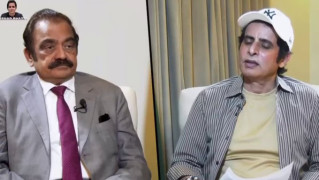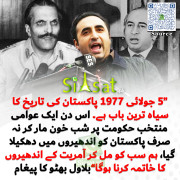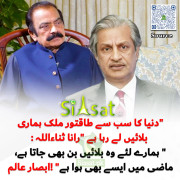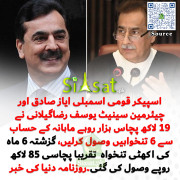Night_Hawk
Siasat.pk - Blogger
[h=2]I really wanted to hate Inbox; then I tried it.[/h]  By Mike Elgan
By Mike Elgan
Computerworld | Nov 1, 2014 3:04 AM PT
Dear Google Inbox:
I wanted to hate you. I really did.
At first I thought: "Oh, you think you're so great with your fancy Material Design and snobby invitation-only access. But I know your type. You're really out to kill my beloved email, and take away control from me and give it to some faceless algorithm that never sleeps."
Look, I know plain-vanilla email is un-glamorous and ugly. But I've spent 20 years figuring out how to use it productively. Heck, within Gmail alone, which I've used now for seven years, I've built up hundreds of filters and spent hundreds of hours to manage and optimize and tweak my email system to perfection.
You see, I'm a zero inbox guy. I consider email the original and only universal social network. In fact, I've used all the tech pundit cliches about email, and believed them.
I have to admit that after Leo Laporte invited me to Inbox, I just intended to "use" you. You know, for the sake of learning all about you so that I might better criticize and oppose you. Know thy enemy, etc.
And in fact our first couple of days together my fears and suspicions were confirmed. You gave me that queasy feeling that I didn't really understand where the messages were going and couldn't really trust you to not hide things from me.
But after you proved perfectly reliable, and after I discovered that it's somehow even easier to un-archive, un-delete and search for filed away messages than in Gmail itself, I came to trust you.
More than that. I began to prefer Inbox over regular Gmail, and then even more than Mailbox (which helped pioneer some of the gestures you're using). Now, I kind of feel addicted to you.
The reason is some combination of visual appeal, mental clarity about what's going on and super ease of use.
They say design is about how you make people feel. And your design makes me feel warm and fuzzy all over.
You're a multifaceted creature, to be sure -- a cross between email, a to do list and Google Now, with an extra helping of search, geofencing, snoozing and other cool tricks.
How did you know that I always wanted a great to-do list integrated with email, and have tried to use the Gmail Tasks feature of Gmail many times (logically concluding that it should work and optimistically hoping that this time it will be different)? Each time I tried Tasks, it always left me uneasy -- it was too cold and utilitarian to spend much time with.
But not you -- you're the opposite. Your to-do list and email integration is a joy. Your Material Design is so easy to look at. Not only are reminders integrated into the email system, the email system itself is treated like to-do items. When you're done with either an email or a reminder, it doesn't feel like you're deleting email. It feels like you're checking off a to-do item or filling something away for later.
And speaking of reminders -- that autocomplete when you set up a reminder is amazing. I just type in buy and it offers a grocery list. Any reminder shows a list of possible completed items, which -- if correct -- I can just choose.
And how do you manage to do that voodoo that you do while retaining my old Gmail filters and folders? And you let me set up new filters without making it seem like that's what I'm doing. It really just feels like I'm filing things into the right categories, then I can tell each category what I want it to do.
Your whole bundling thing is really nice -- way more appealing than regular filters or tabs. Categories like "Finance," "Purchases" and "Low-Priority" let me deal with types of incoming information as groups, either seeing them each just once a week, or snoozing or dismissing the lot with a single click or tap. I can even choose to have items in each bundle category show up on the phone's notifications or not. And, of course, I can create my own new categories.
I also like the way you use colors and icons and bolding and thumbnails in the inbox to give me an intuitive grasp of what's in the messages or the bundles -- and even extending some of that design approach to search results, making that more appealing and intuitive.
And that big, red plus button for starting a new email or reminder is really nice, especially the way my most frequently used contacts or actions automagically appear there for one-tap addressing. I love the way the plus spins around, landing on a pen icon when you hover over it, then the playfulness with which those frequently used options are displayed.
You've also figured out how to let me interact with stuff from the inbox without opening messages. For example, you show me thumbnails of attached pictures, which I can tap to open and even save the pictures, all without opening the email itself.
One major benefit is that I'm having to open a lot less email and burn my brain trying to grok what's in there. You're categorizing and surfacing attachments and handling a lot of stuff...so I don't have to. Thank you.
Before all this goes to your head, let me be clear: You're not perfect. For example, I could really use a desktop client or some way to default to you when clicking on an email address in the browser as you can with Gmail.
I wish your geo-fencing alerts were applicable to reminders and not just emails or clusters. And I could also use a recurring reminders feature.
Still, you're not even in beta -- you're not even available to the public, and already you're my favorite email client ever -- and also have now become my to do list as well.
I just thought you'd like to know how I feel about you. Because I think we're going to spend a lot of quality time together.
Yours Truly,
Mike

Mike Elgan
Mike Elgan writes about technology and tech culture. Contact Mike and learn more about him at http://Google.me/+MikeElgan.
http://www.computerworld.com/article/2841885/an-open-email-to-google-inbox.html
 By Mike Elgan
By Mike Elgan Computerworld | Nov 1, 2014 3:04 AM PT
Dear Google Inbox:
I wanted to hate you. I really did.
At first I thought: "Oh, you think you're so great with your fancy Material Design and snobby invitation-only access. But I know your type. You're really out to kill my beloved email, and take away control from me and give it to some faceless algorithm that never sleeps."
Look, I know plain-vanilla email is un-glamorous and ugly. But I've spent 20 years figuring out how to use it productively. Heck, within Gmail alone, which I've used now for seven years, I've built up hundreds of filters and spent hundreds of hours to manage and optimize and tweak my email system to perfection.
You see, I'm a zero inbox guy. I consider email the original and only universal social network. In fact, I've used all the tech pundit cliches about email, and believed them.
I have to admit that after Leo Laporte invited me to Inbox, I just intended to "use" you. You know, for the sake of learning all about you so that I might better criticize and oppose you. Know thy enemy, etc.
And in fact our first couple of days together my fears and suspicions were confirmed. You gave me that queasy feeling that I didn't really understand where the messages were going and couldn't really trust you to not hide things from me.
But after you proved perfectly reliable, and after I discovered that it's somehow even easier to un-archive, un-delete and search for filed away messages than in Gmail itself, I came to trust you.
More than that. I began to prefer Inbox over regular Gmail, and then even more than Mailbox (which helped pioneer some of the gestures you're using). Now, I kind of feel addicted to you.
The reason is some combination of visual appeal, mental clarity about what's going on and super ease of use.
They say design is about how you make people feel. And your design makes me feel warm and fuzzy all over.
You're a multifaceted creature, to be sure -- a cross between email, a to do list and Google Now, with an extra helping of search, geofencing, snoozing and other cool tricks.
How did you know that I always wanted a great to-do list integrated with email, and have tried to use the Gmail Tasks feature of Gmail many times (logically concluding that it should work and optimistically hoping that this time it will be different)? Each time I tried Tasks, it always left me uneasy -- it was too cold and utilitarian to spend much time with.
But not you -- you're the opposite. Your to-do list and email integration is a joy. Your Material Design is so easy to look at. Not only are reminders integrated into the email system, the email system itself is treated like to-do items. When you're done with either an email or a reminder, it doesn't feel like you're deleting email. It feels like you're checking off a to-do item or filling something away for later.
And speaking of reminders -- that autocomplete when you set up a reminder is amazing. I just type in buy and it offers a grocery list. Any reminder shows a list of possible completed items, which -- if correct -- I can just choose.
And how do you manage to do that voodoo that you do while retaining my old Gmail filters and folders? And you let me set up new filters without making it seem like that's what I'm doing. It really just feels like I'm filing things into the right categories, then I can tell each category what I want it to do.
Your whole bundling thing is really nice -- way more appealing than regular filters or tabs. Categories like "Finance," "Purchases" and "Low-Priority" let me deal with types of incoming information as groups, either seeing them each just once a week, or snoozing or dismissing the lot with a single click or tap. I can even choose to have items in each bundle category show up on the phone's notifications or not. And, of course, I can create my own new categories.
I also like the way you use colors and icons and bolding and thumbnails in the inbox to give me an intuitive grasp of what's in the messages or the bundles -- and even extending some of that design approach to search results, making that more appealing and intuitive.
And that big, red plus button for starting a new email or reminder is really nice, especially the way my most frequently used contacts or actions automagically appear there for one-tap addressing. I love the way the plus spins around, landing on a pen icon when you hover over it, then the playfulness with which those frequently used options are displayed.
You've also figured out how to let me interact with stuff from the inbox without opening messages. For example, you show me thumbnails of attached pictures, which I can tap to open and even save the pictures, all without opening the email itself.
One major benefit is that I'm having to open a lot less email and burn my brain trying to grok what's in there. You're categorizing and surfacing attachments and handling a lot of stuff...so I don't have to. Thank you.
Before all this goes to your head, let me be clear: You're not perfect. For example, I could really use a desktop client or some way to default to you when clicking on an email address in the browser as you can with Gmail.
I wish your geo-fencing alerts were applicable to reminders and not just emails or clusters. And I could also use a recurring reminders feature.
Still, you're not even in beta -- you're not even available to the public, and already you're my favorite email client ever -- and also have now become my to do list as well.
I just thought you'd like to know how I feel about you. Because I think we're going to spend a lot of quality time together.
Yours Truly,
Mike

Mike Elgan
Mike Elgan writes about technology and tech culture. Contact Mike and learn more about him at http://Google.me/+MikeElgan.
http://www.computerworld.com/article/2841885/an-open-email-to-google-inbox.html










































